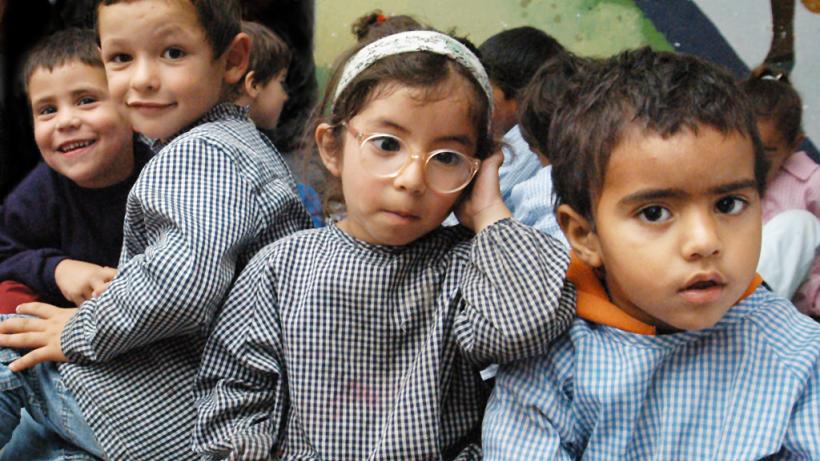
More spending is not the answer: Evidence from Uruguay’s public schools
During the last decade, the Uruguayan government has made a substantial effort to increase educational resources; however, academic results have not improved. Riddled with inefficiencies, the public education system is in crisis. Today’s blog asks, to what extent are Uruguayan public secondary schools efficient, and which policies and practices should be promoted to improve educational achievement in public schools?
It’s hard to argue with the belief that a better educated, more skilled labour force is more productive and able to contribute to the economic growth of a country. The growing percentage of public expenditure invested on education over recent years in many countries is a reflection of this conviction. This escalation of effort however, is not reflected in improvements in the educational achievement of public schools. In fact, there is still no conclusive empirical evidence to suggest that greater resources lead to better results. This raises the possibility that public education systems in many countries are concealing inefficiencies (Hanushek, 2003).
Resources are finite and scarce
Given both the importance and the scale of expenditures on public education in many countries, it stands to reason that improvements in public school performance could translate into significant gains in efficiency. Greater increases in academic performance may be attainable even with current resource levels of resources. Public expenditure on education is one of the largest public budget items, and the public sector is the main provider of education in most countries.
Governments cannot afford inefficiencies, particularly in countries where one extra dollar spent on education may mean there is one dollar less to spend on other necessary public services.
Developing countries often collect far less tax revenue, as a share of GDP than their developed counter parts. This produces a fiscal constraint that often trades off with the quality or scale of public services available. Governments cannot afford inefficiencies, particularly in countries where one extra dollar spent on education may mean there is one dollar less to spend on other necessary public services.
Are Uruguayan public secondary schools efficient?
We estimate the efficiency level for Uruguayan public secondary schools who participate in the Programme for International Student Assessment (PISA) 2012 wave. Our results show that Uruguayan public secondary schools that were evaluated could improve students’ academic outcomes by an average of 11.5%, with the current resource allocation. Furthermore, we show that if all school-level inefficiencies are eliminated, the percentage of students below proficiency level 2 (the minimum ‘competence threshold’ defined by OECD) would be reduced from 67% to 49% in mathematics and from 59% to 43% in reading. By contrast, the percentage of top-scoring students (performance levels four to six), could almost be doubled, from 13% to 25% and from 14% to 27% in mathematics and reading tests respectively.
Which policies and practices should be promoted in order to improve educational achievement in public schools?
We find that inefficiencies are higher in schools with higher percentage of repeating students. This result calls into question the adequacy of the current Uruguayan grade retention policies at all levels of the education system. Uruguay has one of the highest repetition rates in the region. It would perhaps be better to identify an earlier stage at which to intervene. Younger (primary school aged) students who are at risk of repeating may benefit from the provision of additional support, early on, to prevent grade repetition.
Additionally, we find that promoting learning techniques to enhance student’s skills in mathematics would produce significant improvements in the academic outcomes, without the need for additional resources. Although these practices should be promoted mainly in the classroom, commitment and parental support at home are also needed to ensure the effectiveness of these practices. Although our research is focused in secondary education, these teaching and learning techniques should be encouraged from the beginning of the students’ academic life, when it has the greatest potential to influence non-cognitive skills (Heckman and Kautz, 2013).
teaching and learning techniques should be encouraged from the beginning of the students’ academic life, when it has the greatest potential to influence non-cognitive skills
Finally, we explore the relationship between school autonomy and efficiency levels. We find that hardly any of the variables associated with school autonomy are associated with efficiency. Decentralising the responsibility of establishing the disciplinary policies, the assessment practices or the content of the courses does not seem to affect schools’ efficiency. In contrast, providing certain responsibility to school principals in the distribution of the school budget seems to be positively related to the school efficiency. These are interesting findings, since decentralisation remains a hot-button issue in the current debate on education policy.
International evidence also shows that decentralisation is successful only in countries where a school’s accountability is properly monitored using a standardised criteria (Hanushek et al. 2013; OECD 2013b). This is not the case in Uruguay, where there is great heterogeneity in accountability, and a lack of systematic procedures.
It is noteworthy that our results should be interpreted with some caution. Although these recommended practices do not generate additional direct costs, some of them could lead to associated indirect costs for some individuals involved in the educational process. Therefore, it is essential to achieve a general commitment by all stakeholders in the educational process (authorities, teachers, students, families and society) to ensure effective improvements in educational efficiency for public secondary schools.

